I must admit to some skepticism when the Microprose trademark got rudely disinterred a few years back and slapped on top of a brand new publishing house. I think very highly of the Microprose of the early ‘90s — to the point where my In Praise Of columns were just the Microprose Nostalgia Hour for a couple of months — and after watching other zombie trademarks shuffle along for years (Atari is the big one, which is currently trying to go big on cryptocurrency) I wasn’t looking forward to the same thing happening to Microprose. To my considerable surprise, though, the new owners have been somewhat smart about this and have kicked off their revived label by publishing… well, pretty much exactly the kind of game the OG Microprose would have been interested in publishing back in the day: a selection of strategy titles that sit halfway between the accessibility of an RTS and a grognardy war sim, which both supply a hefty digital manual (another fine Microprose tradition) and expect you to actually read through the entirety of it in order to learn the game1. Last year they published Highfleet and Carrier Command 2, which both appeared to be reasonably solid efforts even if they didn’t manage to hook me in for more than a couple of hours. And now this year they’ve published Regiments, which has.
Regiments will look somewhat familiar to long-term readers of this blog: in terms of look, feel and theme it’s a carbon copy of Eugen’s Wargame trilogy, which I very much enjoyed playing between 2012 and 2015. All of these games focus on late 1980s “Cold War gone hot” showdowns between NATO and Warsaw Pact forces in eastern Europe, and all of them involve ordering formations of tanks and mechanized infantry around to capture victory points, and all of them blend rather more detail into the gameplay than your typical RTS does — things like unit morale, armour thickness and armour penetration, and ammo supplies are all modelled and have a big effect on how you play the game. Where Regiments starts to differ from Wargame, though, is in its scale. Wargame had you handling brigade or even division-level engagements involving thousands of troops, but — as you might have guessed from the name — Regiments focuses on smaller regiment-sized formations of hundreds.
In gameplay terms, this means you have to control no more than 10-14 units at a time; a unit can be a platoon of four tanks, or four infantry fighting vehicles (IFVs) transporting thirty infantrymen inside, or a pair of Shilka self-propelled AA guns, but you can’t control individual tanks or soldiers. Because your forces are comparatively quite small this means you have more time to think about and manage each platoon, but it also means that you have to because swamping your enemies with sheer weight of numbers — as was sometimes possible in Wargame — is no longer an option. You have to maximise the combat effectiveness of every unit that you have in order to win; no longer is that group of outmoded T-64 tanks only good for soaking up anti-tank missile fire so that your actually-good tanks can advance behind them and destroy the enemy. Often the T-64s are all that you’ll have for armoured support, so you have to learn how to use them effectively — and this means properly getting to grips with Regiments’ take on the wargame-lite combat mechanics pioneered by Wargame.
There are many different subtypes and models of unit available to you in Regiments. For example, the West German forces have access to Leopard 1A5s, Leopard 2A1s, and Leopard 2A4s, and having this variety is something that I’m sure will please a certain segment of the Regiments playerbase. Despite this, though, it is not necessary to have an encyclopaedic knowledge of late Cold War military technology to play the game, because the differences between each model of Leopard are statistical only; they all behave the same way in the game. All you need to know to get by is the general unit type; it’s this that’ll dictate how you use it, and then you can just apply a general “higher numbers on the end = better” rule that’ll hold true 95% of the time. In this case the Leopard is a main battle tank, and so you can use it the same way as you would a T-64 or a Chieftain or an M60, which are also main battle tanks. The actual in-game unit models may look different and the newer variants may be qualitatively better, but the basic capabilities don’t change.
With that in mind, it’s probably best to explain Regiments combat mechanics by explaining what each general unit type does and the niche it occupies on the battlefield, because I can explain the importance of things like terrain, stealth and line-of-sight by proxy as I go through the list:
Infantry. These always come with armoured vehicles of some kind to transport them around the map, but unusually (I think it’s a development limitation) the infantry can never be separated from the transports; when the infantry dismounts they’ll advance and fight with the transports as a single unified group2 that can bring more guns to bear on a target but which moves more slowly. The transports can be either APCs, which are completely useless in a fight, or IFVs, which can pack a significant midrange anti-armour punch thanks to their anti-tank guided missiles (ATGMs). The infantry themselves have access to ATGMs as well as short-range anti-tank and anti-air missiles that will shred anything that gets too close, but they’re outranged by nearly everything else on the battlefield. Infantry are used either to ambush unsuspecting enemies by hiding them in forests or cities, or to hold victory point locations thanks to being the only unit in the game that gets a double entrenchment bonus — all units will dig in and get a basic “hasty” entrenchment bonus if left in one place for long enough, but only infantry can establish prepared positions, and they become extremely tanky to anything attacking them from the front if allowed to do so.
Tanks. Contrary to what you might expect, these are not the classic RTS tanks that would normally form the lynchpin of your force. A shocking number of units in Regiments have access to ATGMs, and tanks don’t have great vision; they will not be able to see the unit firing the ATGMs at them until it’s far, far too late, and so unsupported tanks fighting at even medium range are going to die very quickly no matter how thick their armour is. However, what tanks do have are main guns with an extremely long range — much longer than the tanks’ vision range — that are effective against every single type of ground target in the game. If there’s another unit spotting for them they’ll obliterate targets caught in the open in short order, and even targets in covered positions like hedgerows and urban areas won’t last that long unless they’re entrenched. So what you do with tanks is sit them back in a wooded area that’s in range of the area you want to attack but out of range of any potential ATGM fire (you get quite good at judging this after a while), and then send in the…
Recon. Light armoured vehicles that are equipped with, at best, a piddly little autocannon that’ll give away their position when it fires in exchange for lightly scratching the paint on one enemy IFV. The first thing you do when you call in a recon team is to set them to Hold Fire mode, since they’re prone to immediately exploding if somebody even looks in their direction and so firing their main gun is just an elaborate form of suicide. From then on, though, they’re advancing ahead of your main force to scout out enemy positions; they don’t have X-ray vision and will not be able to see units hidden inside cities or forests, but for anything else their high vision and good stealth rating means that they have a very good chance of spotting targets before they get spotted themselves, at which point you park the recon team up in a hedgerow somewhere while you call in other units to eliminate the threat. The major limitation of recon is that you’ll never have access to more than two recon units at a time (not that you’d necessarily want more as they’re effectively non-combatants) and if you want to explore cities or forests you’re much better off probing with a dismounted infantry platoon.
Helicopters. Helicopters are some of the most powerful and flexible units you can field: they move fast, they ignore terrain, and they have long-range anti-tank missiles that can put out a lot of damage in a short space of time. They’re even relatively safe from return fire as most units don’t have the appropriate weapons to usefully engage helicopters; dedicated AA units will blow them out of the sky in two or three salvos if you’re not paying attention, but otherwise they can act with relative impunity as long as they don’t get too close to any infantry toting MANPADS. Most of their drawbacks come from the resource management side of the game: you can only deploy units up to a certain amount of points cost in each mission, and helicopters are expensive, with a pair of attack choppers costing just as much as 8 IFVs and their supporting infantry. They also run out of missiles very quickly and need to be retreated off-map to resupply, so while they might be fast and mobile they tend to spend most of their time travelling to or from a deployment zone instead of actually fighting. Ultimately helicopters are a nice-to-have in spite of their power: they’re very effective when used to support your pushes and as a roving reserve that can quickly shift to counter enemy pushes, but there are many situations where the points would be better spent on something with a bit more staying power.
Anti-air. The most niche unit in the game, since gun AA is practically useless against ground targets and missile AA is actually useless against ground targets — it can’t shoot at them at all. However you’ll still want at least one unit covering you, for two reasons. One is helicopters, which might not be able to fight for long but which are just as devastating to your forces as they are to the enemy’s; if AI attack helicopters show up you’re going to lose a lot of troops unless you can get an AA unit over to that flank quickly. The other is attack runs from enemy jet fighters, which are one of the area-targeting call-ins available to each side; these range from artillery barrages to smoke screens to illumination flares for night-time battles, but the jets are the most dangerous of all since the pilots will actively target units caught in the attack zone instead of just going for a dumb saturation bombardment, and their cluster bombs can wipe out whole armoured platoons in a single run. AA guns are your only defence against this, as they can open up on jets at much longer ranges than they can helicopters and they’re almost certain to put out enough fire to panic the pilots and make them break off before they drop their ordnance.
Artillery. Your classic indirect fire unit for softening up dug-in enemy troops. Comes in a few flavours: mortar carriers that need to follow along just behind your main force to stay in range and which aren’t powerful, but which have enough ammo to fight for a long time without resupply; larger self-propelled artillery guns which can hit anywhere on the map and which do more actual damage, but which run out of shells quite quickly; and rocket artillery, which will dump everything they have onto a single target point before having to retreat off the map to reload. No matter what sort of artillery you’re dealing with, though, you’re really not going to be impressed with their damage potential. Mortar rounds will bounce off of tanks, and even the heavier stuff won’t do much more than cause a minor dent in the target’s overall HP total unless you go in for a really protracted bombardment. However, some form of artillery support is still essential since an artillery attack causes a disproportionate amount of morale damage to a unit; anything under fire has a stress bar that starts to fill up, and as it fills the stressed unit will fire more slowly and less accurately. A fully panicked unit is far less effective in combat, and so using artillery to inflict morale damage is key to making sure that you can attack a fortified point without taking a disproportionate amount of casualties.
(There’s also a few units that are hybrids of these basic unit types, like recon choppers and ATGM-armed tank destroyers, but this list covers around 90% of what you’ll see in a typical game of Regiments.)
The final thing to talk about is unit veterancy. Regiments is a single-player-only game with two game modes, Skirmish and Operations, Operations are the Regiments version of a campaign; there are seven of them, and each Operation has you taking command of a single regiment with a preset selection of units as it fights a protracted series of up to four separate battles. In between battle phases you can spend currency acquired from taking objectives on upgrading your regiment — buying new task forces to fill gaps in your unit roster, expanding your deployment points pool, replenishing combat losses — and the general idea is that everything is persistent until the end of the Operation. This includes unit veterancy, which works much the way you’d expect: units get combat experience as they fight and destroy the enemy, and periodically level up from Green recruits all the way to Elite shock troops. There’s lots of RTSes which have done unit veterancy like this, but I can’t think of many where it was quite so important as it is in Regiments thanks to the limited deployment pool. Because you can only field around a dozen units at a time the difference between an Elite unit and a Green one is much more noticeable and impactful; Elite units are significantly more accurate and less prone to combat stress, and an Elite unit can successfully hold off enemies at a one-to-two or even one-to-three ratio so long as it’s properly supported.
In short, high veterancy units can be a tremendous force multiplier for you and critical for winning the Operations, where you’re almost always at a numerical disadvantage compared to the enemy. This is one reason why Regiments has an unusual emphasis on force preservation. Sure, you could have that outflanked infantry platoon fight to the death, and then call in another once it had been destroyed (you can only call in one instance of a unit but have enough spare vehicles to replace losses several times over, even total ones) but then you’d be down four IFVs and the unit would lose any veterancy bonuses it had acquired thanks to the previous crews being extremely dead. For this reason, if you have a unit that’s getting slaughtered it’s much better to retreat it off-map, which is an automatic process that you trigger by selecting the unit and then mashing Q twice. Once you do this the unit will pop a smoke screen (if it has one) and start reversing at full speed back towards your deployment zone; once it has spent a sufficient amount of time out of combat the retreat is assumed to be successful and the unit magically disappears from the map, and back into your deployment pool.
But not immediately. Retreating has a few beneficial aspects to it; combat damage will be repaired, ammo supplies will be replenished, and any destroyed vehicles will be replaced (if you have spares available). Running out of ATGMs is often a good reason to retreat and resupply units even if they’re otherwise untouched; you do have supply trucks available that can be invaluable for keeping an assault going long enough to take an objective, but they’re slow and vulnerable and can only be in one place at a time. However, these benefits come at the cost of time: the time taken to retreat in the first place, the time taken to repair and rearm (represented by a countdown timer on the unit in the deploy menu), the time taken to for the deployment points you originally spent on the unit to trickle back into your points pool, and, once you call the unit back in, the time taken for it to travel back to the front line. It’s always better to retreat a unit than it is to lose one, but retreating still means that unit is going to be unavailable for at least five minutes, possibly more, and so it’s not something that you do lightly. There is a judgement call to be made, with half-dead platoons being pushed forwards onto one more point because the mission timer is ticking down and you can’t afford to refit them before it expires.
Grasping the fundamentals of the six basic unit types, how they are used together, and how to keep them alive in the long-term via timely retreats is the key to succeeding at Regiments. It’s a true combined arms game as no single element on its own will win a battle for you. In order to take a point held by just a couple of units of entrenched infantry you’ll need at least three of the following.
- Good scouting from Recon units to let your units fire from long range and improve their accuracy.
- Artillery bombardment to suppress the enemy and protect your troops on the way in.
- A smoke screen – the enemy can’t shoot you if they can’t see you.
- Supporting fire from tanks to stop any reinforcements moving up.
- An extremely wide flanking manuever, as entrenchment bonuses only work against attacks striking an entrenched unit’s 180 degree frontal arc.
If you do all of this, a single unit of veteran infantry can easily defeat a force several times their own size with negligible losses. If you don’t, then at best you’re going to be fruitlessly chipping away at fortified positions until you run out of ammo, and if you’re stupid enough to actually try and close with an entrenched enemy without doing anything to even the odds then you’re going to start thinking that Regiments is a very unfair game as all of your tanks and IFVs spontaneously explode.
If it wasn’t obvious, I quite like Regiments’ smaller, slower and more cerebral take on the Wargame formula. There are some bits that feel a bit unpolished or anaemic, like AA units feeling like a waste of a deployment slot unless a helicopter happens to turn up, but in general everything works together quite well and provides a good level of tactical challenge. There’s a surprising amount of variety in the Operation mission design, too; I was expecting them to be a series of attack-focused missions where you systematically clear enemies off of objective points, and Regiments has its fair share of those, but it’s also quite good about leveraging those regimental unit rosters to do interesting things. Iron Tide is an operation where you’re given a Soviet armour formation with no less than three units of T-64 tanks plus a bunch of mechanized infantry and told to take ground, with the catch being that they aren’t veterans and base T-64s kind of suck compared to the NATO tech they’re going up against, meaning you really have to learn how to make the most of tanks in that mission. Then there’s the operation that puts you in command of a Belgian regiment of light tanks that’s trying to destroy Soviet artillery positions; you have a few units of Chasseurs with ATGMs that can sting tanks that come after you, but if you get into a stand-up fight with any of the Soviet forces on the map you’ll probably lose. Instead you need to use the night-time environment (and your superior night vision equipment) to avoid everything except the mission objectives and bait the enemy into coming to you.
In spite of all of this good design work (or perhaps because of it), though, there was an annoyance at the back of my brain that I couldn’t quite get over while I was playing it, and it has to do with the AI. The Regiments AI isn’t exactly bad at the game, as it understands how to maneuver and use its artillery and call-ins pretty well; it’s also quite good at sending units to attack you from unexpected angles. My problem is that with all of the thought and consideration that I have to give to combined arms and force preservation, the AI isn’t bound by the same rules. When it attacks you it does so using preset waves of troops that it gets for free, and when you wipe those out it’ll call in another wave in a couple of minutes. It doesn’t fight the same way you do, driving its infantry and tanks straight into the teeth of your prepared positions, because it doesn’t have to. In your first couple of missions it feels good to leverage tactics and combined arms to come out of it with a four to one kill ratio, but this feeling quickly vanishes as it becomes apparent you’re fighting an unfeeling robot with access to infinite troops. From that point on it just feels mildly frustrating to have your attempts to advance repeatedly stymied by attack wave after attack wave; it would be very different if I knew that there was some end to them, that I could exhaust their reinforcements and reserves the way they could potentially do to mine, but as far as I can tell this is impossible.
And as engrossing a tactical challenge as the Operations might be, there’s also no real meaning behind your victories. Your goal in each Operation is to score a target number of victory points by completing mission objectives, and there’s three victory point thresholds that can be thought of as Bronze, Silver and Gold ratings. The issue here is that that characterisation I just gave them is far more than Regiments bothers to do; it refuses to acknowledge your actual mission results in any way, or even to save your high score, and that really cuts down on the replayability of the game. What’s the incentive for me to try and get a higher victory point score on an Operation if there’s no functional difference between a blowout win that gives me maximum points and just barely scraping through with the lowest score possible? When combined with the naked artificiality of the enemy forces, this makes Regiments very much a once-through-and-done game for me (there’s no multiplayer); the Operations might have presented some interesting problems to solve, but having solved them once I feel zero desire to go back and solve them in a different way. This is one area where I really do wish Regiments had taken a bit more of a lead from classic Microprose strategy games, which were always very good at contextualising your victories.
Nevertheless, Regiments remains an impressively solid strategy game — all the more so seeing as it’s mostly the work of a single developer3. The game has numerous shortcomings that I haven’t mentioned because 1) they’re comparatively minor and 2) they’re also largely understandable when you learn that they’re the result of extreme resource constraints; it’s still far from a flawless experience and I don’t think it has much in the way of replayability, but that doesn’t matter to me so much since it still took around 12 hours to play through all of the Operations and my brain was fully engaged for all of that time, in a way that it hasn’t been for a little while now. Twelve hours of fun is a perfectly decent length for a computer game, and while others might want more from a strategy game I personally find myself pretty satisfied with what Regiments has to offer.
- Interestingly the new Microprose aren’t the only ones doing this: they have competition from another relatively new publisher called Hooded Horse who are also publishing a lot of upcoming mid-tier strategy titles (including my current GOTY 2022, Old World). This may be one reason why Microprose’s future slate of games looks to be branching out a bit from pure strategy. ↩
- Which is contrary to established Cold War doctrine, but we’ll gloss over that. ↩
- Microprose are helping out with things like art and localisation, but the game design and coding is all one person. ↩

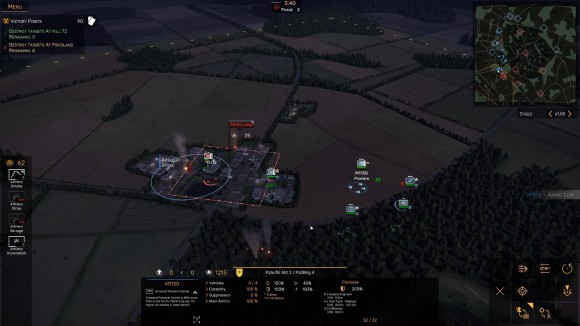
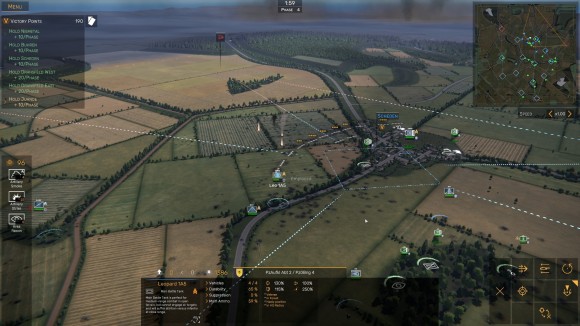
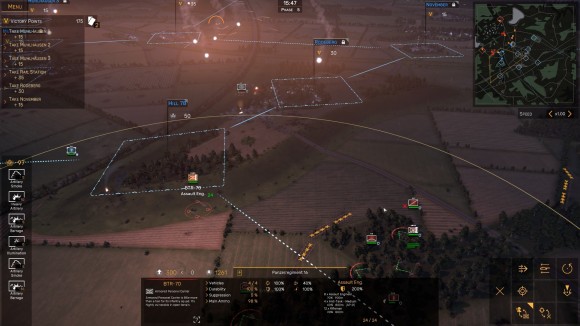
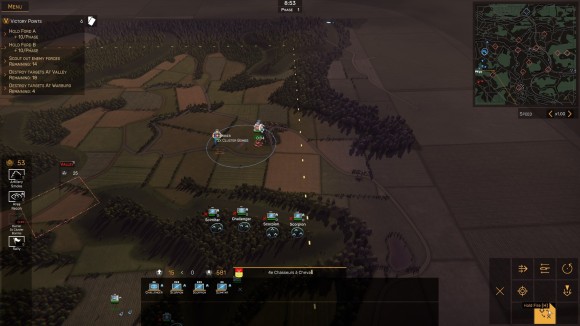
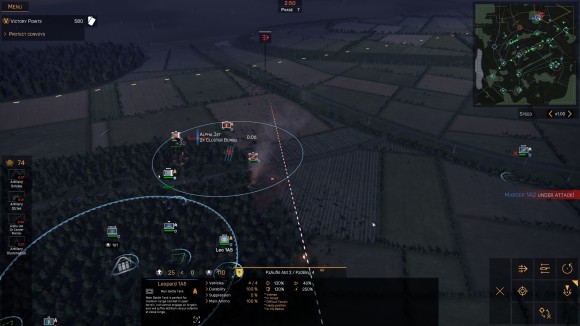
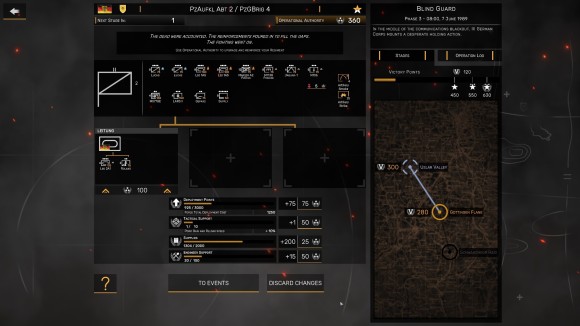
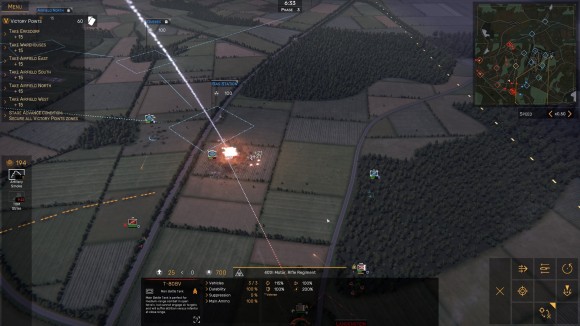
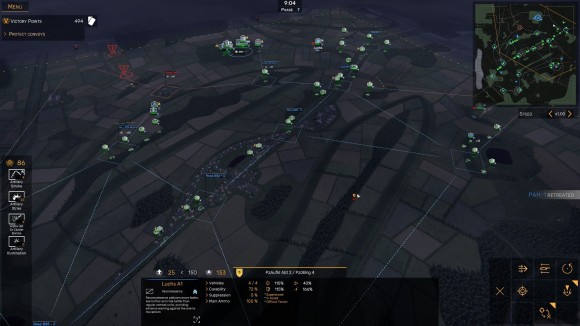
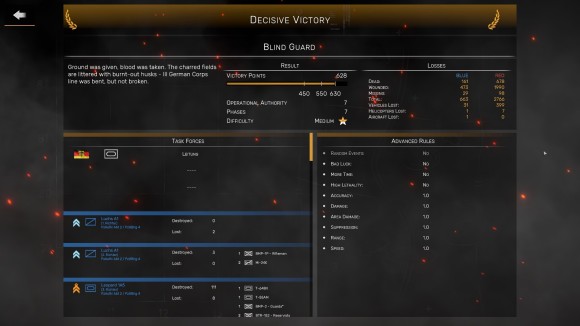
Non intuitive game is US Engrish.